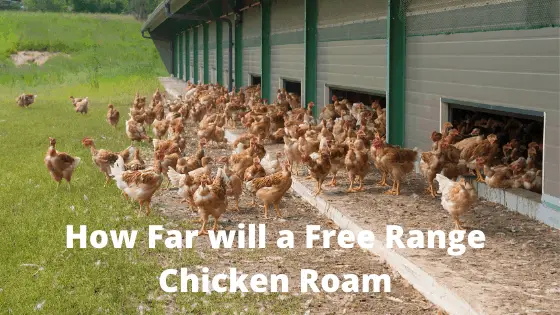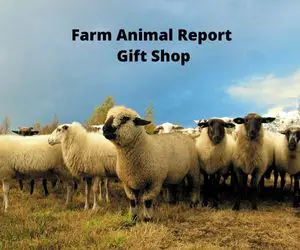As a General Rule, a Chicken will Roam 250-300 feet away from its Chicken Coop. Chicken foraging for food is the main driver of their roaming. Meat Birds roam less while South American varieties will roam farther. Most chickens roam far and look for insects and the like. It depends on the situation every time they are with groups that do not stray far from the coop, they roam around the coop.
How far will a Free Range Chicken Roam
How far will a Free Range Chicken Roam – The idea of keeping chickens in the backyard is an ancient one, and it is a common impression that it takes a lot of lands to raise chickens, at least an acre of grass. As a Rule of Thumb, a Chicken will Roam 250-300 feet away from its Chicken Coop.
You will be surprised to know that this isn’t the case and the actual amount of room chickens need is different
Check Out Amazon for Educational Resources for Breeding Chickens
If you intend to allow your chickens to roam freely and want to know how far a free-range chicken will roam. How much space does the chicken need to roam and how could you raise free-range chicken than you must read the article below.
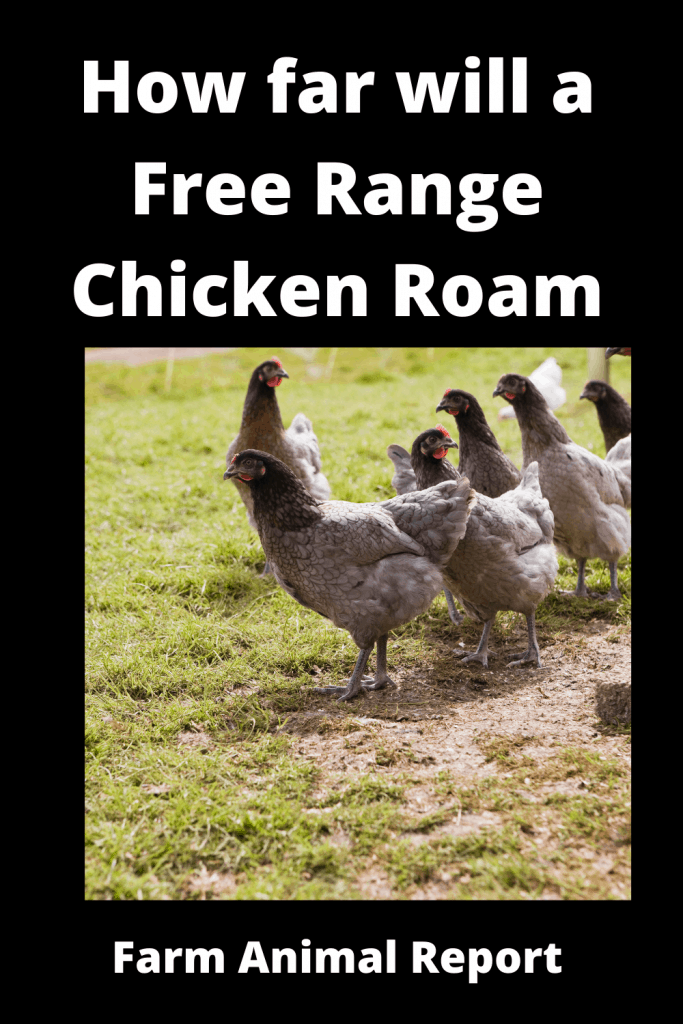
How Far will a Free-Range Chicken Roam?
from foraging, which is its main activity and driving force
Have you ever seen chickens roaming the farms? Well, if we talk about chickens, how far they go, they generally go about 250 feet from their chicken coop.
12 Ways to Make Money by Chicken Farming—Extensive Guidelines for Chicken Farmers
On all farms, chicken has its separate habits. The chickens move about 300 feet from their chicken coop. It should be noted that the chicken obtains the vast majority of its food from foraging, which is its main activity and driving force.
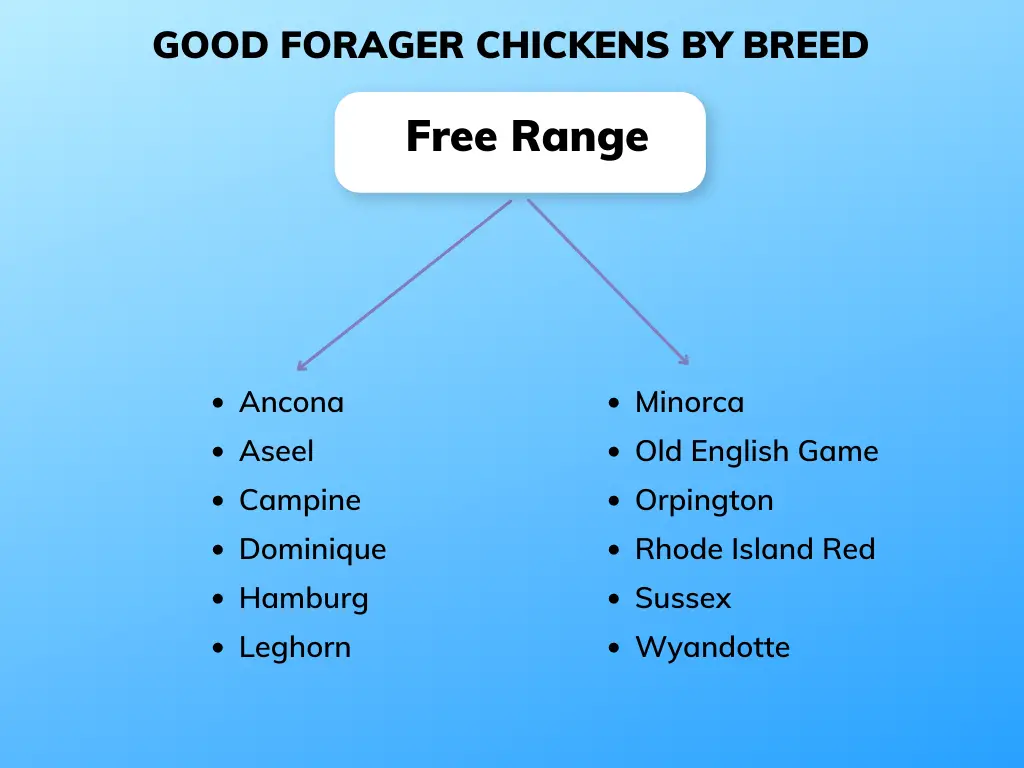
Have you ever thought about how far they go when they are in groups? Another fact is that it depends on the birds. Meat birds (brown eggs) generally stay close. South American breeds are forager; they don’t stay close to the coop. Some don’t have tails.
Most chickens roam far and look for insects and the like. It depends on the situation every time they are with groups that do not stray far from the coop, they roam around the coop.
Every time they find food near their coop, they don’t go far. But when they can’t find food near them, they go through the forest, away from the farm. All chickens know where they live. They leave at dawn and return at dusk.
Will Free-Range Chickens Run Away
Generally, put chickens will not run away. Usually, they stay close to their Roost and Chicken Coop. They may wonder if they cannot find enough food. Going Farther and farther away. Also, they will run to escape predators.
Generally, they do not Run away from where they have food and are familiar with
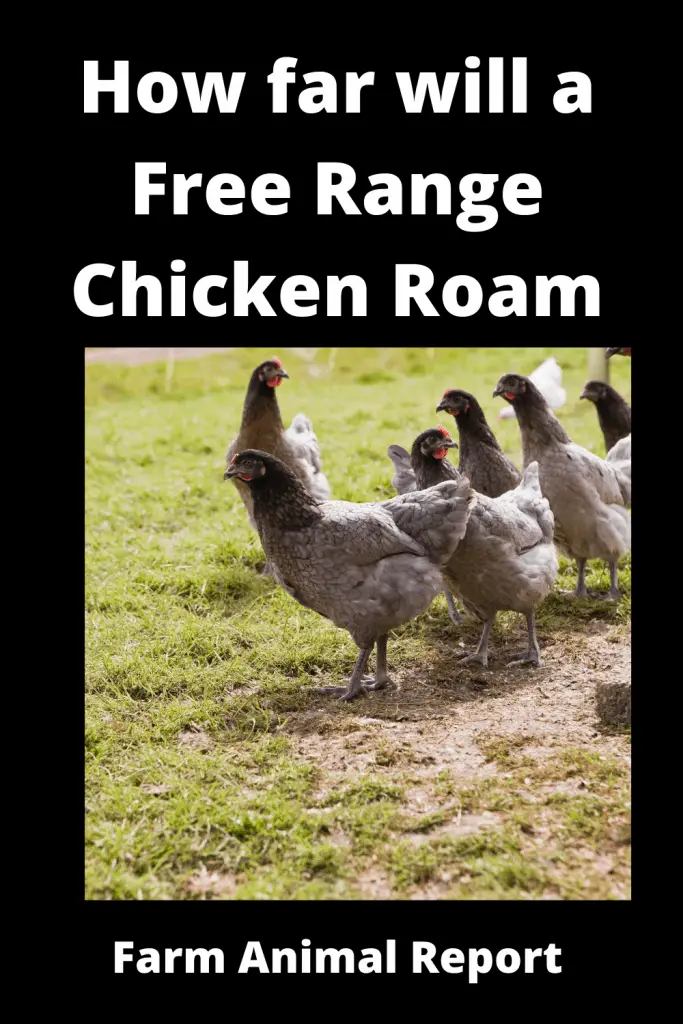
Train Your Chickens to find their way Home
Here are some suggestions so that you can train your chickens so that as they Free Range they will return to their coop at night.
- Do Not Give your Free Range Chickens Free access to food
- Feeding Cue – Here Chick, Here Chick, Whistle, etc
- Have food in Chicken Coop – so they associate food with the coop
- Check your chickens at dusk, take a count then go collect stragglers.
- Set up a roosting area before the coop. So as stragglers come in at dark. Can find a place to roost if they do not go into the coop.
- Stragglers that do not come home at night – do not give them access to food. – none – eventually they will learn that food is found in the coop
- If some chickens do not figure to come back to the coop at night – just eat them – it’s you or the fox, or raccoon – some just do not learn
How Far can a Chicken Run
Without flying a chicken can run at speeds up to 9 MPH. They run at quick spurts and can change directions on a dime. This agility allows them to elude predators. Chickens do not run distances.
They can fly short distances at a height of 10 feet. The longest recorded flight of a chicken was approximately 300 feet
Will Chickens Stay Close to Home
Yes they will, Chickens will stay close to home, their Chicken Coop. They will stay where they are familiar with and where they receive food. Chickens can be trained to return to their coops at night through the feed that you are giving them.
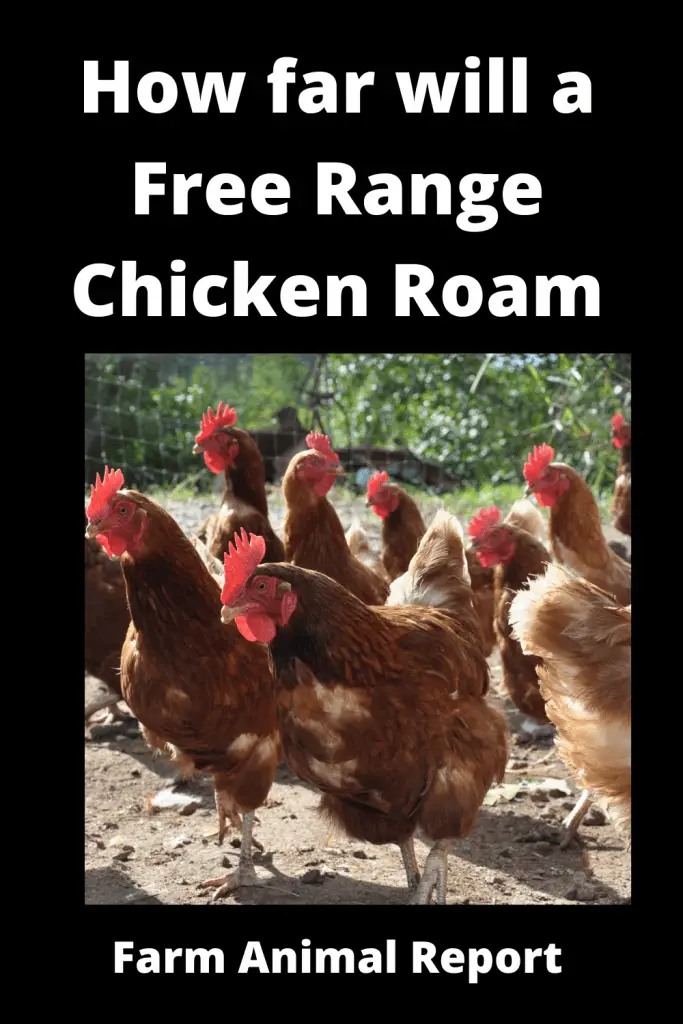
When can I let my Chickens out to Free-Range
Before you let your chicks out to Free Range. They need to have all their feathers developed. They need to be old enough that they are able to get back into the chicken coop. You may have a ramp, or they may need to be able to jump up. Usually 6 weeks they are generally old enough.
It is good to do it gradually and let them out an hour before dark and then watch them as they learn. You can also let half of them out, and they will try to get back to the rest of the flock
How Much Space Do Chickens Need To Roam?
If we talk about roaming and how much space each chicken needs, the answer is that each chicken will require at least 15 square feet. If you plan to raise 10 chickens, you will need around 150 square feet (10×15).
If you want to keep your chicken happy and healthy, the more space you give it, the better it will grow. Don’t leave your chickens only 15 square feet each; Try increasing the space up to 25 square feet.
Now, where and how you allow your chickens to roam is up to you. If you give them more space, they will have more fun.
How to Rear Free-Range Chickens?
In terms of raising free-range chicken, there are two traditional schools of thought.
- Total free-range method
- Chicken run and coop method
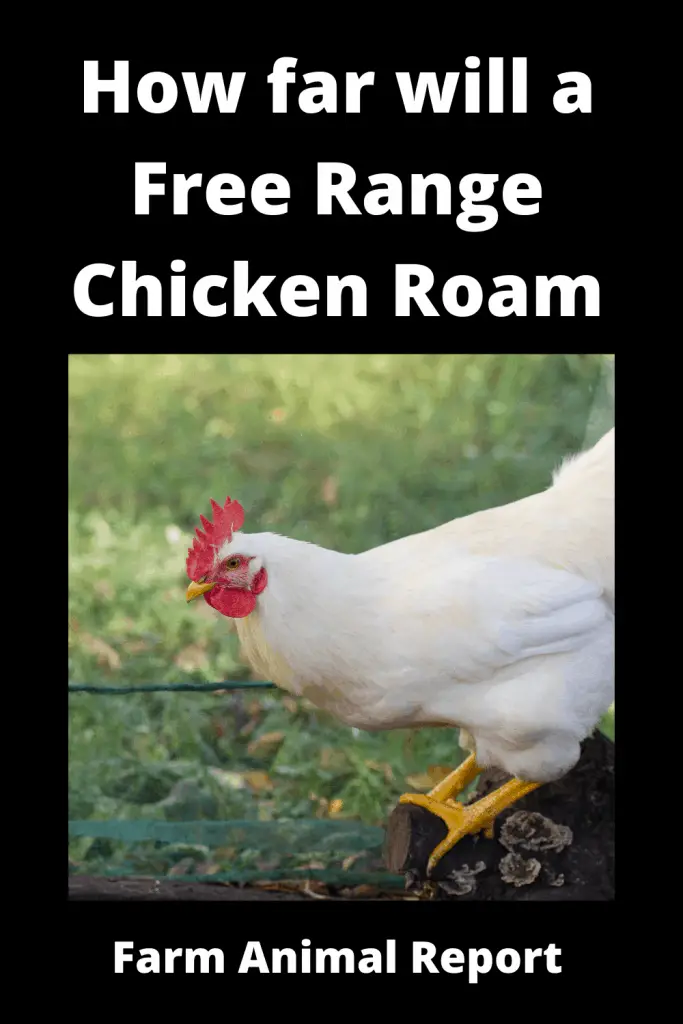
Total Free-Range Method
In this method, a nocturnal grain feed or other treat is used to lure the herd back to the chicken coop. Chickens are allowed access to an outside space that they scratch through the grass of an open field.
In the total free-range method, flocks may be out of a confined area for all or part of the day. The open area can be fenced pasture, in your garden, or in the open ground. But one thing is sure: the herd can move in the wild at will.
Chicken Run and Coop Method
In this method, the nutritional needs of these backyard chickens are met with feed. Food is different for different ages; usually, food is used for beginners, growers, and layers.
The feed is put when your chicken starts laying eggs around 20 weeks. Some high production laying hens may require the additional calcium provided by the oyster shell.
Types of Free Range Methods
- Complete Free Range – They Determining their Boundaries
- Confined Ranging – Perimeter fences
- Mobile Ranging – Very Attractive
- Multi-Species Rotational Grazing – Chickens Follow other Animals – Sheep – Cows etc in a rotational Pattern. Each one using that section of pasture then moved to new. – Great for feeding chickens and parasite control for the other livestock
- Part-Time Ranging – confined part of the day – released into larger areas for the balance
- Full-Time Containment – use of chicken Runs – More labor-intensive
Problems of Free-Range in Winter
It is difficult to raise chickens outdoors in winter, especially if you live in a snowy area. Therefore, it is essential to keep your herd confined to the chicken pen. Your chicken will not scratch the snow for food.
Chickens can also experience frostbites on their wattles and combs. So if the temperature drops below 25 ° F, a turns on the heat lamp.
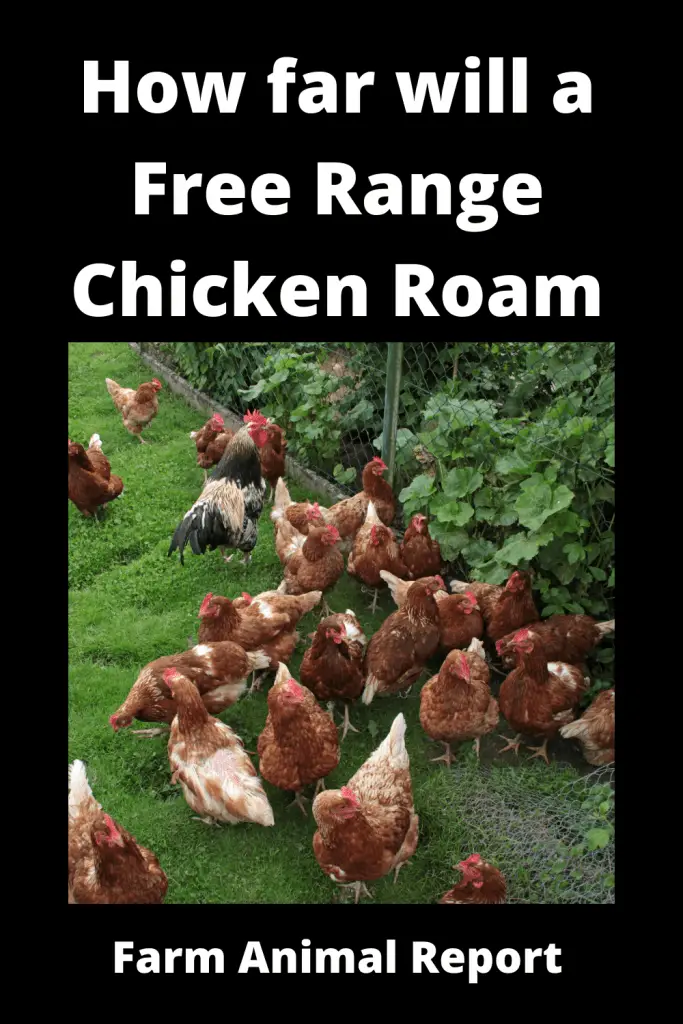
10 Benefits of Free-Ranging Your Flock
Some benefits that are obtained from free-range chickens are
- The free-range egg is a high protein diet. These gorgeous golden yolks eggs are best for health. The diet of free-range chicken is 70% of protein.
- In free-range less grain is required, and money is saved.
- The hunt for food keeps the chicken occupied and entertained.
- In the free-range, a variety of food is available that meets all the nutritional requirements.
- There is no problem with lice, mites and feather and chicken will make their own dust bath area.
- Free-range chickens are physically fit and healthy.
- Eggs are of better taste.
- If you have free-range chicken, there will be no bugs and spiders in your yard and around your home.
- Chicken poop is a good source of fertilizer for your yard.
- No problem of ensuring enough space for each bird is free-range farming.
Natural Foods for Free Range Chickens
| Insects They Love to Eat | Insects they will not eat |
|---|---|
| Earthworms | Elderbugs |
| Grasshoppers | Lady Bugs |
| Grasshoppers | Honey Bees |
| Ants | Wasp |
| Terminates | Bumble Bees |
| Grasses | Stink Bugs |
| Green Leafy | |
| Berries | |
| Hookworms | |
| Larvae | |
| Spiders | |
| Scorpions | |
| Beetles | |
| Spiders | |
| Grubs | |
| Mealworms | |
| Crickets | |
| Ticks | |
| Slugs | |
| Mayflies | |
| Parisite Eggs | |
| Gnats | |
| Cockroaches | |
| Japanese beetles | |
| Earwigs | |
| Butterflies | |
| Salamanders | |
| Tiny Lizards | |
| Tomatoe Worms | |
| Cabbage Worms | |
| Fleas | |
| Pill Bugs | |
| Amphids | |
| Misquitos | |
| Fly / Maggots | |
| Fire Ants |
Insects they will Eat
Insects they will not eat
6 Disadvantages of Free-Range Farming
Some common disadvantages of free-range chickens are
- In free-range chicken will poop everywhere they go.
- They are at a high risk of predators.
- Chickens will eat everything from your garden including your favorite flowers
- If your chickens are not trained, they will not lay eggs in the proper area.
- They till your gardens. Even the ones you don’t want them in.
- It is difficult to free-range chickens in winters.
How to Protect your Chickens when Free Ranging
One of the major problems that Farmers have in Free-Ranging their Chickens, is how to protect them from Predators. Predators include – Dogs, Bobcats, Skunks, Racoons, Minks, Cats, Owls, Hawks, and Snakes
- Train Birds to Return to House at night
- Make sure Chicken Coop is Varmit Proof – Need to close it at night
- Raise your Coop 12″ off ground to discourage, skunks, snakes, etc
- Keep Henhouse floor tight – so snakes and rats cannot squeeze through
- Coyotes and Bobcats can jump high – need top netting on chicken Runs – wires run randomly across the top will discourage Hawks and Owls from swooping in and grabbing a chicken
- 1″ x 2″ mesh better to keep raccoons from reaching through and some minks get to get thru larger mesh
- Motion sensor lights at night will let you know if there is an unwelcomed guest
- Dogs can stay with your chickens to help protect them
- You can eliminate predator or Protect from Predator
- The fact if able the Predators will return for more Meals
How Do you Remove Chicken Poop from Grass
If you have a lot of chickens or, many in a smaller area. Accumulation of Chicken poop can become quite annoying – here are some suggestions.
- Rake it into a pile and pick it up with gloves, shovel
- Spray it with Garden Hose and it will thin it down and allow it to be absorbed into the dirt faster
- If it is Dried, or Frozen Scarpe it up and move to compost pile
Final Thought
Free-range chickens are the best source of protein. We can rear happy, healthy chickens by putting stands on trees, poultry wire, hardware wire, and bird netting to offer our flock protection when they’re in their yard.


